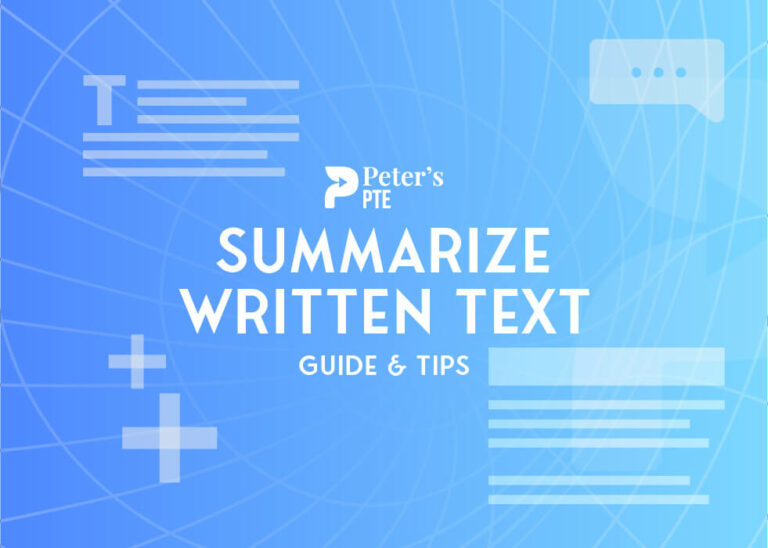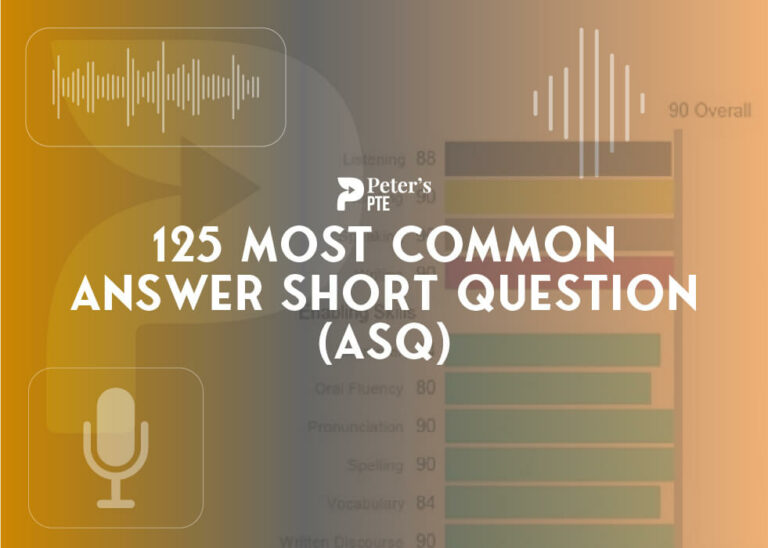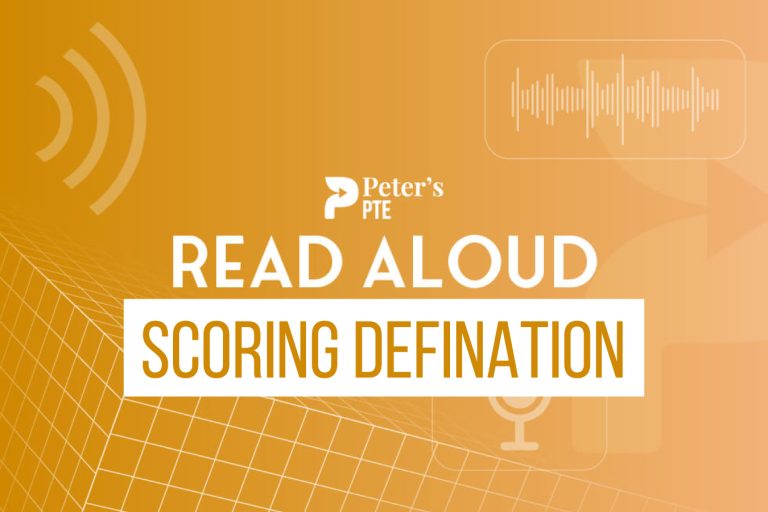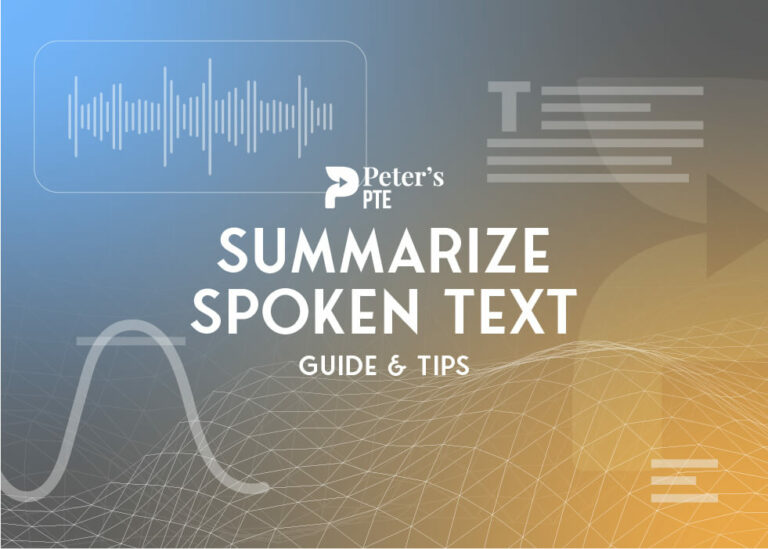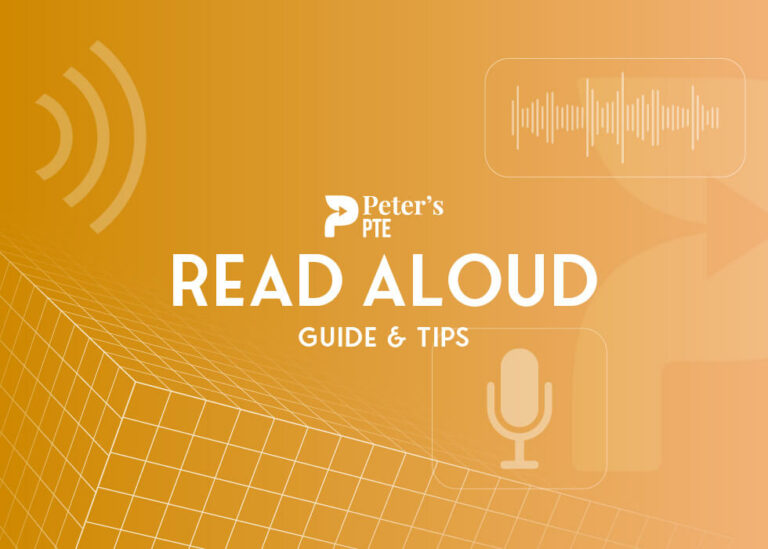PTE’s “Re-Tell Lecture” section can be a real challenge for test-takers. It evaluates your listening and speaking abilities, and in this blog, we’ll provide a comprehensive guide and valuable tips to help you perform exceptionally well in this task. Whether you’re new to the PTE exam or looking to improve your “Re-Tell Lecture” skills, we’ve got you covered. Let’s dive in!
Re-Tell Lecture Format
The PTE Re-Tell Lecture section is designed to assess your proficiency in listening to and conveying information from academic lectures. It tests your ability to summarize, organize, and present the lecture content in your own words. Here’s what you need to know:
Formate
- This section consists of 3 to 4 lectures.
- Each lecture lasts between 30 to 90 seconds.
- You’ll listen to each lecture only once.
- There’s no negative marking for incorrect responses.
- After the lecture ends, you have 10 seconds to prepare your response.
- You also have 1 second to take a deep breath before the microphone opens.
- You then have 40 seconds to record your response.
Visual Aid
These days, PTE often includes a picture or, occasionally, a video to accompany the audio. These visuals can provide crucial context for understanding the lecture content.
How Is It Scored?
The PTE Re-Tell Lecture is scored based on three primary factors: Content, Oral fluency, and Pronunciation.
Scoring Factor
- 5 Score: Re-tells all points of the presentation and describes characters, aspects and actions, their relationships, the underlying development, implications and conclusions
- 4 Score: Describes all key points of the presentation and their relations, referring to their implications and conclusions
- 3 Score: Deals with most points in the presentation and refers to their implications and conclusions
- 2 Score: Deals with only one key point and refers to an implication or conclusion. Shows basic understanding of several core elements of the presentation
- 1 Score: Describes some basic elements of the presentation but does not make clear their interrelations or implications
- 0 Score: Mentions some disjointed elements of the presentation. May not deal properly with the prompt due to significant amounts of pre-prepared/memorized material
Scoring Levels – Pronunciation and Oral fluency
Pronunciation
| Score Level | Scoring criteria |
|---|---|
| 5 – Native-like | All vowels and consonants are produced in a manner that is easily understood by regular speakers of the language. The speaker uses assimilation and deletions appropriate to continuous speech. Stress is placed correctly in all words and sentence-level stress is fully appropriate. |
| 4 – Advanced | Vowels and consonants are pronounced clearly and unambiguously. A few minor consonant, vowel or stress distortions do not affect intelligibility. All words are easily understandable. A few consonants or consonant sequences may be distorted. Stress is placed correctly on all common words, and sentence level stress is reasonable. |
| 3 – Good | Most vowels and consonants are pronounced correctly. Some consistent errors might make a few words unclear. A few consonants in certain contexts may be regularly distorted, omitted or mispronounced. Stress- dependent vowel reduction may occur on a few words. |
| 2 – Intermediate | Some consonants and vowels are consistently mispronounced in a non- native like manner. At least 2/3 of speech is intelligible, but listeners might need to adjust to the accent. Some consonants are regularly omitted, and consonant sequences may be simplified. Stress may be placed incorrectly on some words or be unclear. |
| 1 – Intrusive | Many consonants and vowels are mispronounced, resulting in a strong intrusive foreign accent. Listeners may have difficulty understanding about 1/3 of the words. Many consonants may be distorted or omitted. Consonant sequences may be non-English. Stress is placed in a non-English manner; unstressed words may be reduced or omitted, and a few syllables added or missed. |
Oral fluency
| Score Level | Scoring criteria |
|---|---|
| 5 – Native-like | Speech shows smooth rhythm and phrasing. There are no hesitations, repetitions, false starts or non-native phonological simplifications. |
| 4 – Advanced | Speech has an acceptable rhythm with appropriate phrasing and word emphasis. There is no more than one hesitation, one repetition or a false start. There are no significant non-native phonological simplifications. |
| 3 – Good | Most vowels and consonants are pronounced correctly. Some consistent errors might make a few words unclear. A few consonants in certain contexts may be regularly distorted, omitted or mispronounced. Stress- dependent vowel reduction may occur on a few words. |
| 2 – Intermediate | Some consonants and vowels are consistently mispronounced in a non- native like manner. At least 2/3 of speech is intelligible, but listeners might need to adjust to the accent. Some consonants are regularly omitted, and consonant sequences may be simplified. Stress may be placed incorrectly on some words or be unclear. |
| 1 – Intrusive | Many consonants and vowels are mispronounced, resulting in a strong intrusive foreign accent. Listeners may have difficulty understanding about 1/3 of the words. Many consonants may be distorted or omitted. Consonant sequences may be non-English. Stress is placed in a non-English manner; unstressed words may be reduced or omitted, and a few syllables added or missed. |
Always Remember
- If you pause for more than 3 seconds, the microphone will stop recording. Anything said afterward won’t be captured.
- Take basic keywords from the talk, including adjectives, adverbs, verbs, proper nouns, and other relevant words. Consider capturing partial words to help construct complete sentences later.
- Avoid the use of fillers like ‘uhm’ and ‘aah’ to maintain a smooth and clear speaking pattern.
- Utilize connectors such as ‘besides,’ ‘also,’ ‘moreover,’ ‘furthermore,’ or similar phrases to enhance the coherence of your speech. Use them naturally and comfortably.
- Use the 10 seconds after the lecture to organize and possibly edit your notes. During the next 40 seconds, focus on retelling the lecture content while keeping an eye on the time.
- Partial credit scoring applies to Re-tell Lecture. No credit is given for no response or an irrelevant response.
- This question type affects the scoring of the following: listening, speaking, oral fluency and pronunciation.
- Your writing skills are not tested by this question type, and your reading skills are only used to read the instructions.
Re-Tell Lecture Practice Tips
Use Visual Aids
The images or videos provided can give you an idea of the lecture’s topic. Utilize this information to your advantage. Pay attention to the topic, 2-3 main points, and the conclusion. Commonly used transitional words like “firstly,” “secondly,” “finally,” and “because” can guide your response.
Speaking, Speed & Time Management
Speak at an average and natural pace to focus on pronunciation and fluency. If time is running out and you haven’t covered all main points, proceed to the conclusion. Demonstrating your ability to start and end a summary is essential. During the 10-second preparation time, organize your notes and connect the topic, main points, and conclusion for a well-structured response. Begin speaking confidently when the microphone opens.
Preparation
Practice is vital. Develop a template for this section and rehearse your opening and concluding sentences. Master paraphrasing, as you won’t be repeating the exact words of the speaker. Many paraphrasing exercises are available online to help you improve.
Conclusion
The PTE Re-Tell Lecture is a critical component of the PTE Speaking section. To excel in this task, you must grasp its format and scoring criteria. Learning and applying the provided template can help you structure your response effectively.
Practicing the tips and strategies we’ve discussed is invaluable. Regular practice and proper time management are key to achieving a high score in this section. We hope this comprehensive guide equips you with the knowledge and tools you need to perform your best in the PTE Re-Tell Lecture. Good luck on your PTE journey!

